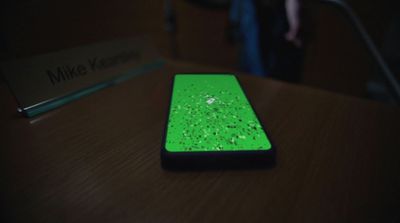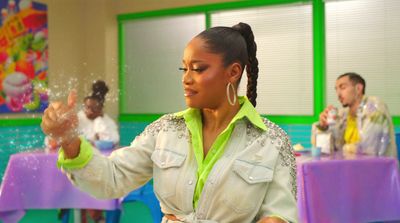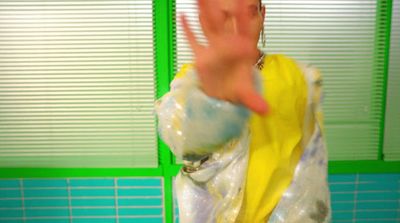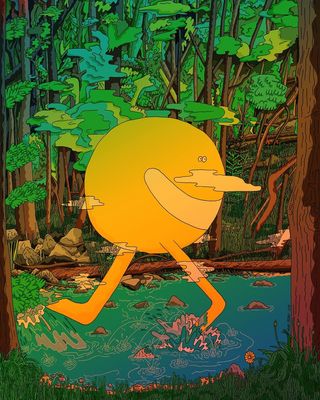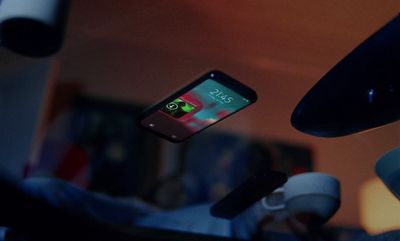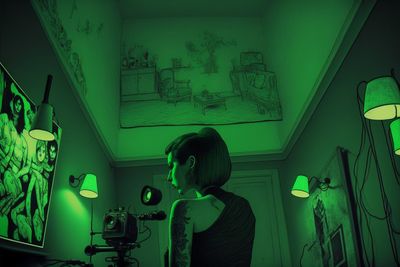Everything about the color Green
The meaning of the color green and color combinations to inspire your next creation.
Browse images in the color green
What color is green?
Green is a vibrant, natural color located between blue and yellow on the color wheel. It is often associated with nature, growth, and renewal.
What are similar colors to green?
For variations within the same lively and refreshing spectrum as green, consider:
- Teal (#008080) combines green's freshness with a hint of blue, creating a calming effect.
- Chartreuse (#7FFF00) is a bright, yellow-green that shares green's lively and energetic qualities.
- Forest Green (#228B22) is a darker, more muted green, evoking the depth of lush forests.
- Emerald (#50C878) has a rich, jewel-toned quality that enhances green's luxurious and vibrant nature.
- Jade (#00A86B) offers a slightly bluish-green hue, reminiscent of the precious stone's timeless beauty.
What color goes with green?
To complement green's natural vibrancy, consider pairing it with:
- Beige (#F5F5DC) softens green's intensity with its neutral, earthy tone.
- Lavender (#E6E6FA) adds a gentle, soothing contrast to green's freshness.
- Peach (#FFE5B4) brings warmth and a subtle contrast to green's coolness.
- Coral (#FF7F50) offers a lively, warm contrast that enhances green's vibrancy.
- Mint (#98FF98) provides a refreshing, harmonious balance with green's natural tones.
What color conflicts with green?
To avoid clashing with green's natural tones, consider avoiding:
- Red (#FF0000) can create a jarring, high-contrast effect with green.
- Orange (#FFA500) may overpower green's coolness with its intense warmth.
- Purple (#800080) can create a discordant mix with green's vibrant tones.
- Burgundy (#800020) may clash with green's freshness due to its deep, rich hue.
- Brown (#A52A2A) can dull green's liveliness with its heavy, earthy tone.
What does the color green represent?
Green is often associated with nature, symbolizing growth, harmony, and freshness. It represents renewal and life, evoking the lushness of spring. Psychologically, green is calming and restful, promoting a sense of balance and tranquility. It is often used to reduce stress and create a sense of well-being. In art and design, green is used to convey a sense of vitality and energy, often representing the environment and sustainability. It is a versatile color that can evoke both peacefulness and vibrancy, depending on its shade and context.
What's the history of green?
The word "green" comes from the Old English "grene," which is related to the German "grün" and the Dutch "groen," all of which are derived from the Proto-Indo-European root "ghre," meaning "to grow." Historically, green has been associated with nature and fertility, often used in art to depict landscapes and lush vegetation. In the Middle Ages, green was a symbol of rebirth and was used in religious iconography. In modern times, green is widely used to represent environmentalism and sustainability, symbolizing a commitment to preserving the natural world.
Color Variations
Shades
Tints
Hues
Color Palettes
Monochromatic
Complementary
Analogous
Triadic
Tetradic
Images with green color
Color Conversions
#008000rgb(0, 128, 0)rgb(0%, 50%, 0%)100, 0, 100, 50hsl(120, 100%, 25%)120, 100, 50#00800046, -52, 508, 15, 346, 72, 13600000000, 10000000, 00000000Color(red: 0, green: 0.5019607843137255, blue: 0)UIColor(red: 0, green: 0.5019607843137255, blue: 0, alpha: 1.0)Color(0xFF008000)
